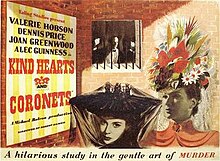
The Movie: Dr. Eileen Flax (Lesley-Anne Down) has just moved to Los Angeles from Boston; and she already faces a life-changing case at the hospital where she works. Late one night a bloody, raving derelict (Pierce Brosnan of Lawnmower Man and the late ‘90s James Bond movies) is brought into ER. He loudly rants nonstop in French, so nobody is able to communicate with or make any sense of him. However, when Flax steps in to check on him; he lunges at her, whispers something in her ear and dies.
Dr. Flax starts having spells of disorientation, sometimes passing out. During these spells she finds herself reliving the man’s last memories. It turns out that the raving derelict was Professor Jean Charles Pommier, a respected professor of anthropology who has spent the last ten years living with various primitive groups. He has only been in L.A. a week, where he and his wife, Nikki (Anna Maria Monticelli; and might I add, a redhead who speaks French! Sigh!), have moved to rejoin civilization. Unfortunately, the prospect of a normal, pedestrian life is already making him bored and restless. But that’s nothing compared to what he’s about to discover.
There is a gang of toughs that vandalizes the couple’s new house nightly. Pommier is overcome with curiosity about them, especially after he discovers a makeshift shrine in the garage. Following and observing them, he discovers that they lead a primitive, nomadic existence; not much different from the people he’s been studying for the last decade. But there is much more.
The Inuit have a legend about the Einwetok (pronounced in-oo-wad), evil nomadic spirits who regularly take the form of humans. They are attracted to sites of tragedy and violence, and they bring madness and destruction to those unfortunate enough to cross their path. Well, it turns out that the Pommiers’ new house is the site of a gruesome murder. Worse, now that the spirits are aware of Pommier, he finds himself hounded; and slowly drawn into another world entirely….
The Review:
“You just look too closely. Most people are luckier; they don’t know that a certain percentage of what they see is not there.”
Nomads is an interesting little horror movie. Admittedly, it is flawed and only a partial success. However, as I have mentioned several times in my reviews of Jean Rollin’s movies, even a partial success can be pretty damn good; sometimes even head and shoulders above typical mainstream genre fare.
With its horror elements, Nomads hits it perfectly. It is a very atmospheric film; one that does a very good job at conveying the sensation of a world that isn’t our own, but that at the same time isn’t as separate from our world as we would like it to be. The horror is mostly hinted at, with just enough glimpses and concrete information to convey the gravity of the threat, but with just enough left to the imagination to make you wonder.
The nomads themselves are very well done. Considering that they include pop stars of the time such as Adam Ant and Josie Cotton, this is especially impressive. The standout for me is Mary Woronov, long my all-time favorite actress (although Brigitte Lahaie is a very close second); who conveys the impression that we’re not looking at a woman, but some inhuman predator in a woman costume. The nomads don’t make any noise (except for one who occasionally lets off an evil chuckle), but through body language and facial expressions they are pretty convincing as individuals who aren’t human; all appearances aside.
Another standout cast member is the ever wonderful Francis Bay, who appears as a creepy blind nun with an undisclosed connection to the evil spirits. Brosnan himself does a good job, more or less convincing in his role. The rest of the cast does adequately at absolute worst.
The final major positive element about this movie that I find worth mentioning is the soundtrack. Bill Conti and Ted Nugent put together three rock songs that are played throughout the film, and Nugent even played guitar for them. Now, I’ve never cared much for Ted Nugent, either as a musician or a human being; but I must admit that the man has talent. The songs really convey the atmosphere of the nomad’s lifestyle and habitat. I just wish it was available on an album.
So with all of these good points, what is the problem with Nomads? I would say that it is one thing; Doctor Eileen Flax. Nothing wrong with Ms. Down’s performance, I think she does well; it’s just that the character herself really doesn’t fit into the movie. Nomads is Pommier’s story, it’s about his decent into this other world and his own damnation. And as it’s about him, we really don’t need Flax.
The connection between the two characters is somewhat spurious, there’s no real in-movie explanation for how he transfers his memories to her. It’s pretty obvious that her entire inclusion in the movie is to provide a set-up for the twist at the end. Admittedly, the twist works. It is somewhat shocking, yet it does flow organically from hints provided earlier in the movie. However, there are plenty ways it could have been done without having to add an unneeded character and her back-story to the film.
So in conclusion, Nomads is a decent, though flawed, little horror movie. It handles its horror through hints and leaving much to the imagination, and does it well. The one downside is that the wraparound plot is unneeded and detracts from the rest of the film. Still, as a whole, Nomads does a great job of conveying the impression of something that lies just beyond the everyday world we take for granted.





